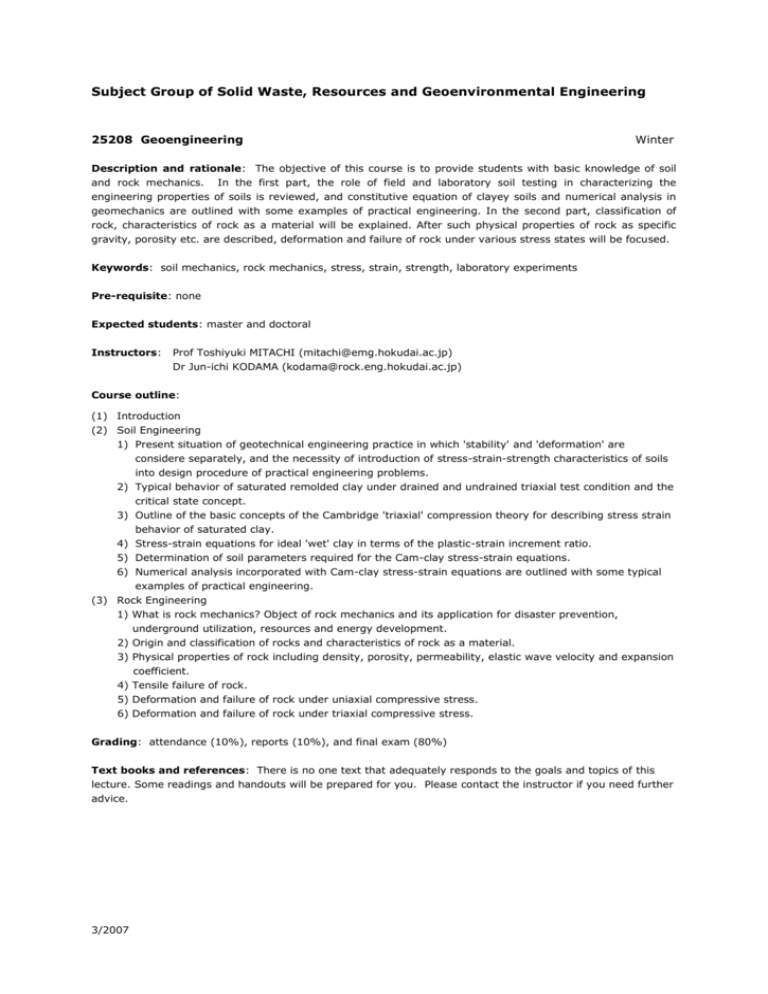view
advertisement

Subject Group of Solid Waste, Resources and Geoenvironmental Engineering 25208 Geoengineering Winter Description and rationale: The objective of this course is to provide students with basic knowledge of soil and rock mechanics. In the first part, the role of field and laboratory soil testing in characterizing the engineering properties of soils is reviewed, and constitutive equation of clayey soils and numerical analysis in geomechanics are outlined with some examples of practical engineering. In the second part, classification of rock, characteristics of rock as a material will be explained. After such physical properties of rock as specific gravity, porosity etc. are described, deformation and failure of rock under various stress states will be focused. Keywords: soil mechanics, rock mechanics, stress, strain, strength, laboratory experiments Pre-requisite: none Expected students: master and doctoral Instructors: Prof Toshiyuki MITACHI (mitachi@emg.hokudai.ac.jp) Dr Jun-ichi KODAMA (kodama@rock.eng.hokudai.ac.jp) Course outline: (1) Introduction (2) Soil Engineering 1) Present situation of geotechnical engineering practice in which 'stability' and 'deformation' are considere separately, and the necessity of introduction of stress-strain-strength characteristics of soils into design procedure of practical engineering problems. 2) Typical behavior of saturated remolded clay under drained and undrained triaxial test condition and the critical state concept. 3) Outline of the basic concepts of the Cambridge 'triaxial' compression theory for describing stress strain behavior of saturated clay. 4) Stress-strain equations for ideal 'wet' clay in terms of the plastic-strain increment ratio. 5) Determination of soil parameters required for the Cam-clay stress-strain equations. 6) Numerical analysis incorporated with Cam-clay stress-strain equations are outlined with some typical examples of practical engineering. (3) Rock Engineering 1) What is rock mechanics? Object of rock mechanics and its application for disaster prevention, underground utilization, resources and energy development. 2) Origin and classification of rocks and characteristics of rock as a material. 3) Physical properties of rock including density, porosity, permeability, elastic wave velocity and expansion coefficient. 4) Tensile failure of rock. 5) Deformation and failure of rock under uniaxial compressive stress. 6) Deformation and failure of rock under triaxial compressive stress. Grading: attendance (10%), reports (10%), and final exam (80%) Text books and references: There is no one text that adequately responds to the goals and topics of this lecture. Some readings and handouts will be prepared for you. Please contact the instructor if you need further advice. 3/2007





